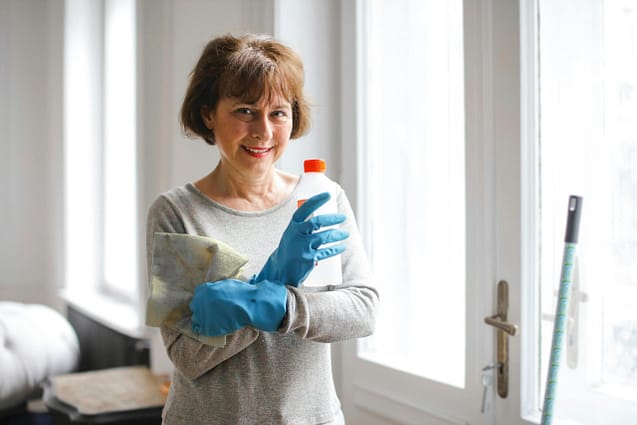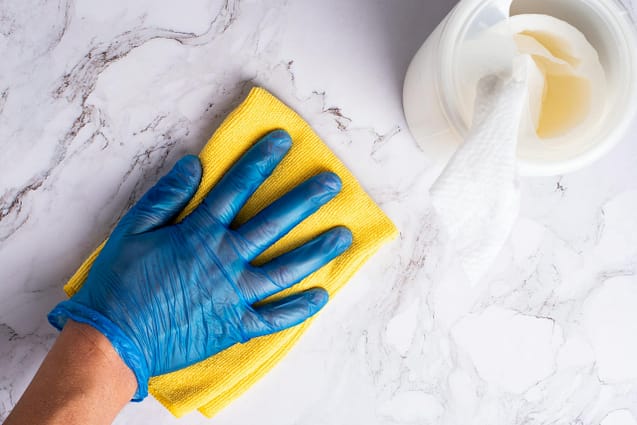Natural cleaning ingredients are simple household items such as vinegar, baking soda, lemon juice, hydrogen peroxide, Castile soap, and essential oils that can keep your home safe and sparkling. They remove dirt, grease, stains, and odors effectively while being gentle on your health and the environment. Many are already in your pantry, making it easy to switch to eco‑friendly cleaning and enjoy a fresh, healthy home.
Introduction
Imagine opening your cleaning cupboard and finding nothing but safe, natural ingredients you can trust around your family, pets, and even your food. No harsh fumes, no warning labels, just simple items that leave every room fresh and sparkling. The good news is you probably already own many of them.
Vinegar, baking soda, lemon juice, and a few other everyday essentials can replace most chemical cleaners with toxic ingredients in your home. In this guide, you will discover the best natural cleaning ingredients, how to use them for every room, and how to make the switch to a healthier, eco‑friendly cleaning routine starting today.
I. What Are the Most Common Natural Cleaning Ingredients?
A. Vinegar
Distilled white vinegar is a versatile cleaner that cuts grease, dissolves limescale, and neutralizes odors. It’s great for windows, countertops, and laundry, but avoid using it on stone surfaces such as marble and granite.
B. Baking Soda
A gentle abrasive and natural deodorizer, baking soda works wonders for scrubbing sinks, deodorizing carpets, and boosting laundry freshness.
C. Lemon Juice / Citric Acid
Naturally acidic, lemon juice and citric acid remove hard water stains, brighten whites, and add a fresh scent. Perfect for kettles, faucets, and cutting boards.
D. Hydrogen Peroxide
A mild disinfectant that helps whiten laundry, clean grout, and sanitize surfaces. Use a 3% solution for household cleaning.
E. Isopropyl Alcohol or Vodka
These evaporate quickly, making them perfect for streak‑free glass and mirror cleaning. They also sanitize high‑touch surfaces.
F. Castile Soap
Made from plant oils, this gentle, biodegradable soap can clean almost any surface when diluted with water. Know more about it in my blog post Castile Soap benefits and uses.
G. Essential Oils
Tea tree, lemon, eucalyptus, and lavender oils add a pleasant fragrance and have antimicrobial properties. Use sparingly and with caution around pets and children.
H. Washing Soda, Borax, Salt
These help with heavy‑duty cleaning and laundry. They work as abrasives, stain removers, and deodorizing boosters.
II. Do Natural Cleaning Ingredients Really Work?
Natural cleaning ingredients can be surprisingly powerful. In many cases, they match or even outperform conventional cleaners, especially for everyday household tasks. The key is understanding what each ingredient does best, and when a store‑bought cleaner might still be necessary. To know more about it, read my blog post about natural cleaning products.
A. When They’re Just as Effective
1. Grease removal: White vinegar cuts through kitchen grease and leaves surfaces streak‑free, similar to many commercial degreasers.
2. Odor elimination: Baking soda neutralizes odors in carpets, refrigerators, and trash bins without masking them with synthetic fragrances.
3. Limescale removal: Citric acid and lemon juice dissolve mineral buildup on faucets and showerheads as effectively as many chemical de-scalers.
4. Stain lifting: Hydrogen peroxide works as a mild bleach, brightening laundry and removing stains without chlorine.
B. When They May Fall Short
1. Heavy‑duty disinfection: In high‑risk areas (such as after handling raw meat), conventional disinfectants approved to kill specific pathogens may be more reliable than natural options.
2. Mold remediation: While tea tree oil and vinegar can help prevent mild mold growth, severe infestations often require stronger treatments.
3. Speed of cleaning: Natural solutions sometimes take longer to work, such as waiting for vinegar or baking soda paste to loosen grime.
C. Real‑Life Examples
- A 2016 study published in the Journal of Environmental Health found that a 5% vinegar solution could reduce certain bacteria levels on surfaces as effectively as some commercial cleaners.
- Many home cooks swear by baking soda to remove stubborn burnt‑on food from pans, avoiding the need for heavy chemical oven cleaners.
- Hydrogen peroxide is frequently used in hospitals, in higher concentrations, for sanitation, proving its germ‑fighting potential in a natural‑leaning cleaning arsenal.
The bottom line: For most everyday home cleaning, natural ingredients get the job done safely and effectively. Knowing when to use them and when to reach for a stronger cleaner will help you maintain both a clean home and peace of mind.
III. Can I Disinfect with Natural Ingredients?
A. Some natural ingredients have proven antimicrobial properties:
1. Hydrogen peroxide kills bacteria, viruses, and fungi.
2. Isopropyl alcohol sanitizes surfaces quickly.
3. Tea tree and thyme essential oils offer natural antifungal and antibacterial benefits.
For everyday home use, these are often enough to keep germs in check.

A lady using Vinegar for cleaning
IV. Is Baking Soda and Vinegar a Good Combo?
Mixing baking soda and vinegar is one of the most well‑known DIY cleaning tricks, thanks to the dramatic fizz it creates. It is satisfying to watch, but the truth is that the fizz is more chemistry show than cleaning powerhouse.
A. Why the Fizz Happens
When you mix baking soda (a base) with vinegar (an acid), they react to form carbon dioxide gas, water, and a small amount of sodium acetate. The bubbling can help loosen light debris in drains or on surfaces, but the reaction actually neutralizes the cleaning power of both ingredients.
B. Why It Might Not Clean Effectively
- Baking soda works best in its alkaline form to scrub, deodorize, and neutralize odors.
- Vinegar works best in its acidic form to dissolve mineral deposits, cut grease, and kill certain bacteria.
- When combined, they cancel out each other’s strengths, leaving mostly water behind.
C. When to Use Them Separately for Best Results
- Use baking soda first as a gentle scrub for sinks, stovetops, and bathtubs.
- Rinse, then follow with vinegar to dissolve residue and add shine.
- In drains, you can still use the fizz as a mechanical way to help loosen minor clogs, but for true cleaning and deodorizing, let each ingredient work on its own.
The bottom line: Baking soda and vinegar are both excellent natural cleaners, but they work best when used in separate steps, not in the same mixture.
V. How to Use Natural Cleaning Ingredients for Everyday Tasks
A. Kitchen
- Degrease stovetops with vinegar and water.
- Deodorize the fridge with an open box of baking soda.
- Sanitize cutting boards with lemon juice or hydrogen peroxide.
B. Bathroom
- Sprinkle baking soda on the sink or tub, then scrub with a damp sponge.
- Spray hydrogen peroxide on grout, let it sit, then scrub clean.
C. Glass and Mirrors
- Mix equal parts water and isopropyl alcohol for streak‑free shine.
D. Floors and Wood Furniture
- Clean sealed hardwood with a mild Castile soap solution.
- Polish wood with a mix of vinegar and olive oil.
E. Laundry and Drains
- Add baking soda to laundry for odor removal.
- Pour baking soda down the drain, follow with vinegar, then flush with hot water.
VI. How to Use Natural Cleaning Ingredients for Everyday Tasks
Switching to natural cleaning is easy when you know exactly what to use and how to use it. Here are simple, effective ways to tackle every part of your home with safe, eco‑friendly ingredients.
A. Kitchen Surfaces and Appliances
1. All‑Purpose Spray
Mix 1 cup distilled white vinegar with 1 cup water in a spray bottle. Add 10 drops of lemon essential oil for fragrance. Spray and wipe countertops, stovetops, and appliance exteriors.
2. Degreaser
Sprinkle baking soda on greasy spots, spray lightly with water, and scrub with a damp sponge.
3. Microwave Freshener
Fill a bowl with 1 cup of water and 2 tablespoons of lemon juice, heat for 3–5 minutes, then wipe down the interior.
B. Bathrooms and Grout
1. Tile Cleaner
Mix ½ cup baking soda with enough water to make a paste. Apply to grout lines, spray with vinegar, let fizz for a minute, then scrub with a brush.
2. Toilet Cleaner
Pour ½ cup of baking soda into the bowl, followed by ½ cup of vinegar. Let it sit for 10 minutes, scrub, and flush.
3. Shower Spray
Combine 1 cup of vinegar and 1 cup of water in a spray bottle for daily after‑shower use to prevent soap scum.
C. Glass and Mirrors
1. Streak‑Free Cleaner
Mix 1 cup water, 1 cup isopropyl alcohol (70%), and 1 tablespoon vinegar in a spray bottle. Spray lightly and wipe with a microfiber cloth.
D. Floors and Wood Furniture
1. Wood Floor Cleaner
Mix 1 gallon of warm water with ¼ cup Castile soap. Mop with a damp (not soaking) mop.
2. Wood Polish
Combine ½ cup olive oil with ¼ cup vinegar. Apply lightly to wood surfaces with a soft cloth, then buff to shine.
E. Laundry and Drains
1. Laundry Brightener
Add ½ cup of baking soda to your laundry detergent for fresher, cleaner clothes.
2. Fabric Softener Alternative
Pour ½ cup of vinegar into the rinse cycle to soften fabrics and reduce static.
3. Drain Freshener
Pour ½ cup of baking soda into the drain, followed by 1 cup of hot vinegar. Let it fizz for 5–10 minutes, then flush with boiling water.

VII. Safety Tips When Using Natural Cleaning Ingredients
Natural cleaning ingredients are safer than most chemical cleaners, but that does not mean they can be used without care. Following a few simple precautions will keep you, your family, and your home protected.
A. Avoid Harmful Combinations
- Never mix vinegar with bleach; this produces toxic chlorine gas.
- Do not mix hydrogen peroxide and vinegar in the same container; the reaction forms peracetic acid, which can irritate skin and lungs.
B. Test on Small Areas First
- Acids such as vinegar and lemon juice can etch natural stone like marble, granite, or limestone.
- Abrasive powders such as baking soda may scratch delicate surfaces like glass or ceramic stovetops.
C. Use Essential Oils with Care
- Always dilute essential oils in water or a carrier such as olive oil before applying to surfaces.
- Keep essential oils away from pets, especially cats, as some oils can be toxic.
- Avoid direct skin contact and wear gloves if you have sensitive skin.
D. Store Safely
- Keep all cleaning products, even natural ones, out of reach of children and pets.
- Label homemade cleaners clearly with their name and date of preparation.
E. Mind Your Surfaces
- Wood, leather, and unsealed stone may require special cleaning methods to prevent damage.
- Always follow the manufacturer's care instructions for appliances and flooring.
Following these safety guidelines ensures you enjoy all the benefits of natural cleaning without any unintended side effects.

Cleaning counter top with natural cleaners
VIII. Can Natural Ingredients Damage Surfaces?
While natural cleaning ingredients are generally gentler than chemical cleaners, some can still harm certain materials if used incorrectly. Knowing where to avoid them and what to use instead will help protect your home.
A. Surfaces That Can Be Damaged
1. Marble, granite, and limestone: Vinegar, lemon juice, and other acids can etch and dull the surface.
2. Hardwood floors and furniture: Excess water or acidic cleaners can strip protective finishes.
3. Aluminum and cast iron: Acidic ingredients like vinegar can cause pitting or rust.
4. Ceramic or glass stovetops: Abrasive powders like baking soda can leave fine scratches.
B. Safer Alternatives for Sensitive Surfaces
1. For natural stone, clean with warm water and a few drops of mild Castile soap. Dry immediately to prevent water spots.
2. For sealed wood, use a damp cloth with diluted Castile soap and dry quickly. Add a light polish of olive oil if needed.
3. For aluminum, wash with mild dish soap and water, then dry completely to prevent oxidation.
4. For glass stovetops, use a soft microfiber cloth with a paste of baking soda and water, applied gently without heavy scrubbing.
By matching the right natural ingredient to the right surface, you can keep your home spotless without sacrificing its beauty or longevity.
IX. Environmental and Health Benefits of Green Cleaning
Switching to natural cleaning ingredients is not just about keeping your home tidy; it is also about creating a healthier living space and protecting the environment.
A. Better Air Quality Indoors
Many commercial cleaners release volatile organic compounds (VOCs) into the air, which can linger and affect indoor air quality. Ingredients like vinegar, baking soda, and Castile soap do not produce harmful fumes, helping you breathe easier while you clean.
B. Lower Exposure to Harmful Chemicals
Children and pets are especially sensitive to harsh cleaning agents. By choosing natural alternatives, you reduce your contact with potential irritants, allergens, or toxins that could harm skin, lungs, or overall health.
C. Eco‑Friendly Impact
Most natural cleaning ingredients are biodegradable, breaking down safely without polluting soil or water. They also often require less packaging, especially if you buy in bulk, which helps cut down on plastic waste. And because they are safer for waterways, you can feel good knowing your cleaning routine supports a healthier planet.
Making these swaps benefits both your home and the world beyond your front door, proving that a sparkling home and a sustainable lifestyle can go hand in hand.
X. Myths and Facts About Natural Cleaning
Natural cleaning has gained popularity, but there are still plenty of misconceptions that can make people hesitant to make the switch. Let’s clear up the most common ones so you can feel confident in your choices.
A. Myth: Natural means weak.
Fact: Ingredients like vinegar, baking soda, and hydrogen peroxide can tackle grease, stains, and bacteria just as effectively as many store‑bought cleaners, when used correctly.
B. Myth: All natural cleaners are safe for every surface.
Fact: Some natural ingredients can damage sensitive materials such as marble or hardwood if used improperly. The key is knowing the right cleaner for the right job.
C. Myth: Natural cleaning takes more time.
Fact: Many natural cleaners work as quickly as their chemical counterparts. Some, like vinegar for limescale, may require a little soaking time, but often with less scrubbing.
D. Myth: You can only clean effectively with store‑bought products.
Fact: Most cleaning tasks can be handled with a few pantry staples, reducing your need for multiple specialized products and saving money in the process.
By separating fact from fiction, you can embrace natural cleaning and avoid the pitfalls that come from misinformation.
XI. How to Choose Truly Safe or Certified Natural Cleaning Products
Not all products labeled “natural” are created equal. Some brands use green marketing to appear eco‑friendly without truly meeting safe or sustainable standards, a practice known as greenwashing. Here is how to choose cleaning products you can genuinely trust.
A. Look for Recognized Certifications
- EPA Safer Choice: Meets strict safety and environmental standards.
- EWG Verified: Free from chemicals of concern according to the Environmental Working Group.
- Green Seal: Tested for performance, sustainability, and health safety.
B. Read Ingredient Labels Carefully
- Choose products with short, clear ingredient lists you can recognize.
- Avoid vague terms like “fragrance” or “proprietary blend,” which can hide synthetic chemicals.
- Look for plant‑based surfactants, natural acids such as citric acid, and biodegradable formulas.
C. Check Brand Transparency
- Trust companies that disclose all ingredients and provide safety data sheets.
- Look for brands that use recyclable packaging or offer refill programs.
By being a careful shopper, you can support companies that align with your values and bring only truly safe cleaners into your home.
Conclusion
The cleaning cupboard of your dreams, stocked only with safe, natural ingredients, can start taking shape today. With a few simple swaps, you can say goodbye to harsh chemicals and hello to a home that sparkles naturally. Start small, try one new ingredient this week, and soon you will wonder how you ever cleaned any other way.
Try my Free 30-Day Natural Ingredient Swap Challenge. It can help you develop the habit of choosing natural ingredients in what you eat and use.

 Simple. Natural. Better.
Simple. Natural. Better.